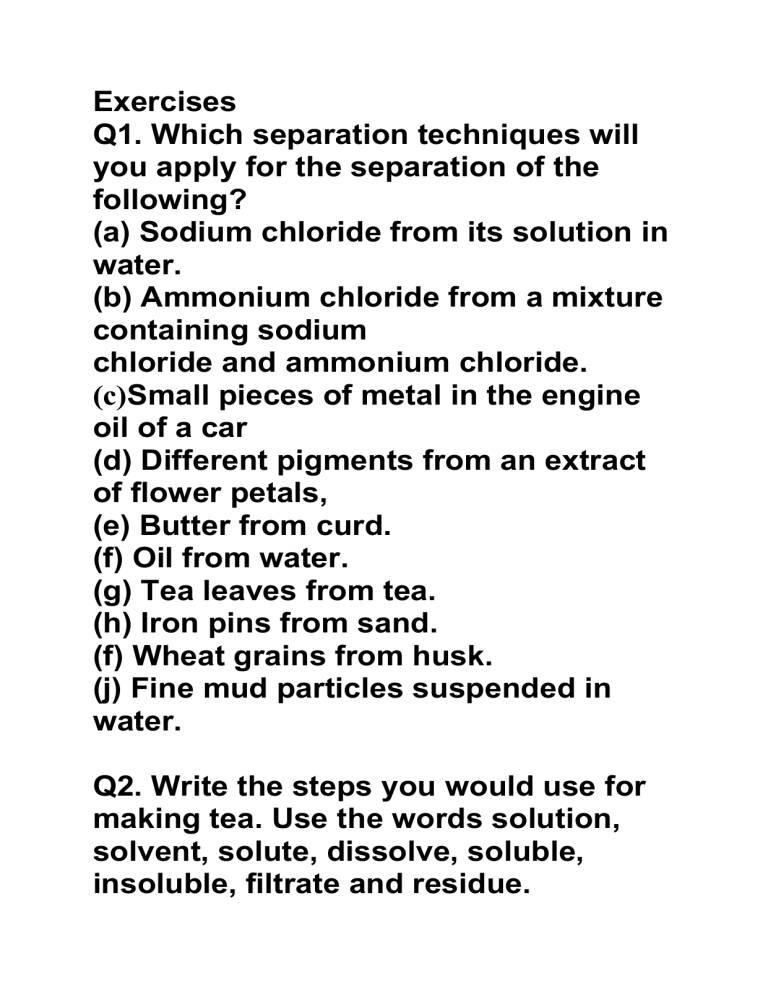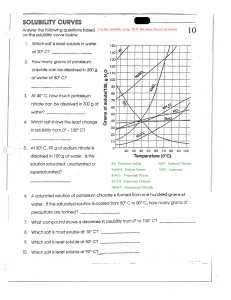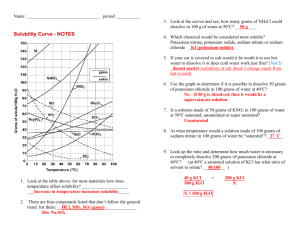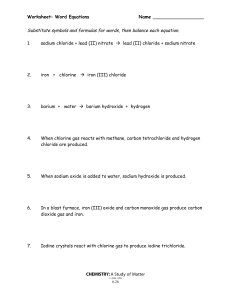
Exercises Q1. Which separation techniques will you apply for the separation of the following? (a) Sodium chloride from its solution in water. (b) Ammonium chloride from a mixture containing sodium chloride and ammonium chloride. (c)Small pieces of metal in the engine oil of a car (d) Different pigments from an extract of flower petals, (e) Butter from curd. (f) Oil from water. (g) Tea leaves from tea. (h) Iron pins from sand. (f) Wheat grains from husk. (j) Fine mud particles suspended in water. Q2. Write the steps you would use for making tea. Use the words solution, solvent, solute, dissolve, soluble, insoluble, filtrate and residue. Q3. Pragya tested the solubility of three different substances at different temperatures and collected the data as given below (results are given in the following table, as grams of substance dissolved in 100 grams of water to form a saturated solution). (a) What mass of potassium nitrate would be needed to produce a saturated solution of potassium nitrate in 50 grams of water at 313 K? (b) Pragya makes a saturated solution of potassium chloride in water at 353 K and leaves the solution to cool at room temperature. What would she observe as the solution cools? Explain. (c)Find the solubility of each salt at 293 K. Which salt has the highest solubility at this temperature? (d) What is the effect of change of temperature on the solubility of a salt? Q4. Explain the following giving examples. (a) saturated solution (b) pure substance (c) colloid (d) suspension Q5. Classify each of the following as a homogeneous or heterogeneous mixture. soda water, wood, air, soil, vinegar, filtered tea. Q6. How would you confirm that a colourless liquid given to you is pure water? Q7. Which of the following materials fall in the category of a "pure substance"? (a) Ice (b) Milk (c) Iron (d) Hydrochloric acid (e) Calcium oxide (f) Mercury (g) Brick (h) Wood (i) Air Q8. Identify the solutions among the following mixtures (a) Soil (b) Sea water (c) Air (d) Coal (e) Soda water Q9. Which of the following will show "Tyndall effect? (a) Salt solution (b) Milk (c) Copper sulphate solution (d) Starch solution. Q10. Classify the following into elements, compounds and mixtures. (a) Sodium (b) Soil (c) Sugar solution (d) Silver (e) Calcium carbonate (f) Tin (g) Silicon (h) Coal (i) Air (j) Soap (k) Methane (f) Carbon dioxide (m) Blood Q11. Which of the following are chemical changes? (a) Growth of a plant (b) Rusting of iron (c) Mixing of iron filings and sand (d) Cooking of food (e) Digestion of food (f)Freezing of water (g)Burning of a candle.





